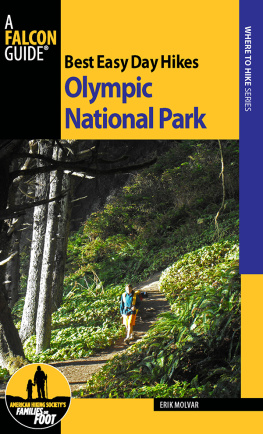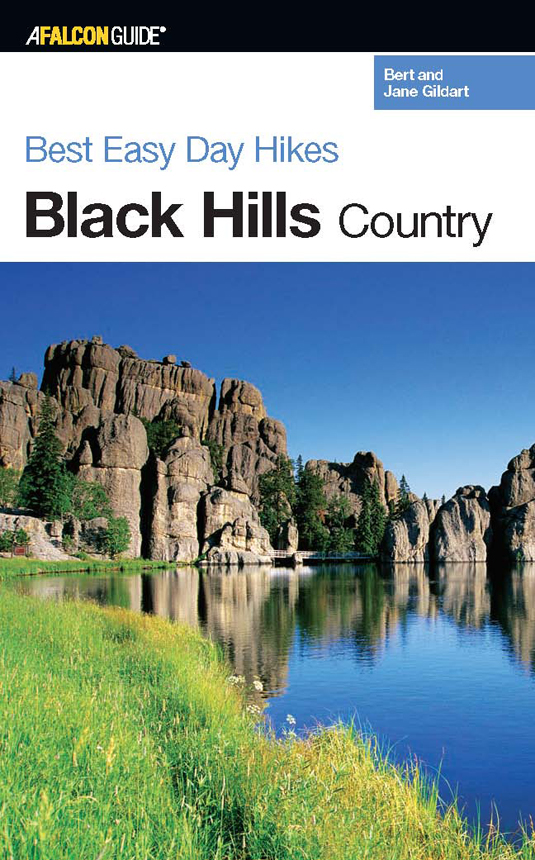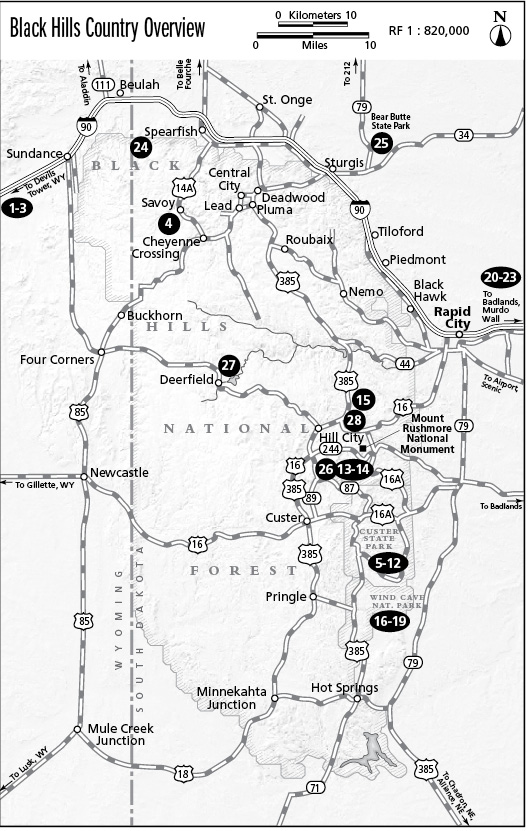Every effort has been made by the authors and editors to make this guide as accurate and useful as possible. However, many things can change after a guide is publishedtrails are rerouted, regulations change, facilities come under new management, etc.
We would love to hear from you concerning your experiences with this guide and how you feel it could be improved and kept up to date. While we may not be able to respond to all comments and suggestions, well take them to heart, and well also make certain to share them with the authors. Please send your comments and suggestions to the following address:
P.O. Box 480
Best Easy Day Hikes Series
Best Easy Day Hikes Black Hills Country
Bert and Jane Gildart
Copyright 2006 by Morris Book Publishing, LLC
All rights reserved. No part of this book may be reproduced or transmitted in any form by any means, electronic or mechanical, including photocopying and recording, or by any information storage and retrieval system, except as may be expressly permitted by the 1976 Copyright Act or in writing from the publisher. Requests for permission should be addressed to The Globe Pequot Press, P.O. Box 480, Guilford, Connecticut 06437.
Falcon and FalconGuide are registered trademarks of Morris Book Publishing, LLC.
Published in partnership with the Black Hills Parks and Forest Association.
Maps by David Sami, Multi Mapping LLC, and M.A. Dub 2006 by Morris Book Publishing LLC
Library of Congress Cataloging-in-Publication Data is available.
ISBN 978-1-4930-0279-5
The authors and The Globe Pequot Press assume no liability for accidents happening to, or injuries sustained by, readers who engage in the activities described in this book.
Contents
Hikes in Wyoming
Hikes in South Dakota
Belowground Hike
Aboveground Hikes
Acknowledgments
Without the help of many people from the various agencies in the Black Hills, our work on this book would have been more difficult. No matter whom we contacted to verify information, we were greeted with friendliness, provided with appropriate suggestions, and presented with a willingness to take the time to review portions of the book for us.
Wed like to thank the following: Jim Jandreau, park manager of Bear Butte State Park; Christine Czazasty, chief of interpretation at Devils Tower National Monument; Marianne Mills, chief of resource education at Badlands National Park; Steve Baldwin, executive director of the Black Hills Parks and Forest Association; Craig Pugsley, visitor services coordinator of Custer State Park; Tom Farrell, chief of interpretation at Wind Cave National Park; Phyllis Cremonini, assistant chief of interpretation at Wind Cave National Park; Laura Burns from the USDA Forest Service, Hell Canyon Ranger District; the Forest Service for help with maps; and Gus Malon, Forest Service wilderness technician.
And last but not least, many thanks to Bill Schneider and Julie Marsh, our editors at The Globe Pequot Press.
All of you made the writing of this book go more easily.
Introduction
The Black Hills are a hikers delight. Contained in these 6,000 square miles of unglaciated valleys and hills are more than 500 miles of trails that do great things. For one, they weave among incredible scenery sculpted by time in accordance with some of the nations most provocative geological mandates. For another, they take you to splendid fishing.Wildlife abounds and roams freely (no bears, however!) in many areas. What all this boils down to is varietysomething for everyone.
Once you begin to envision the areas immensity and the way in which it has affected travelers through the ages, including Crazy Horse, George Armstrong Custer, and a man named Colonel Dodge, youll see why Dodge wrote, The Black Hills country is a true oasis in a wide and dreary desert.
The hills name was ascribed to them by the native people who first lived here and called them Paha Sapa, meaning hills that are black. The color appears that way due to the predominance of ponderosa pine treesthe light and sun influence the overall effect of blackness produced by these trees.
Geologically, the land represents the easternmost extension of the Rocky Mountain uplift. The hills extend about 120 miles north to south and about 40 to 50 miles east to west. Outside of this area lie Badlands National Park, Devils Tower, and the Bearlodge Mountains in Wyomingall created by the same forces as the Black Hills. Although divided politically, these areas are contiguous geographically, and weve kept them together for hikes in this book.
Best Easy Day Hikes Black Hills Country is an extrapolation of hikes from Hiking the Black Hills Country. We have endeavored to choose hikes that will appeal to all who visit this beautiful area, hikes that are easy enough to whet your appetite for something a bit longer and more strenuous. Realizing that easy for some is not easy for all, we hope to entice you onto the trails so that you get at least a brief overview of the riches of the Black Hills.
We have retained the hikes geographic association throughout. Some sections contain short overviews to better acquaint you with the area. Its a good idea to use topographic and park maps and to realize your own limitations and heed them.
Practice zero-impact ethics as you hike. Then you and others who follow will have full enjoyment of the hills.
Some Cautions and General Information
Weather in the Black Hills changes frequently and often without warning. Summer is one of the most pleasant times to be here, but lightning storms are frequent. Stay alert, get away from open ground and exposed ridges, and avoid single tall trees. Hypothermia is another possible risk. Cold rains often drench the mountains and you need to have the appropriate gear with you at all times to avoid getting soaked.
Although the water sources in the Black Hills look clean and enticing, do not drink from any water source unless you purify the water first. Fill your water bottles before setting out, making sure to carry enough to get you through the hike.
Nature runs wild all through the Black Hills. Encounters with free-roaming bison are often likely, and if this happens, move quietly away. No bears remain in the Black Hills, but a few mountain lions do. Lion attacks are rare and, truthfully, youll be lucky if you see one. Mosquitoes are few, but poison ivy is abundant, especially along streams. Heed the adage, Leaves of three, let it be. As in most woody areas, ticks can be another encounter of the personal kind. Use an insect repellent, and wear long pants and long-sleeved shirts. Rattlesnakes are common in the Black Hills, especially around prairie-dog communities. Most will avoid you; just watch where you sit and step.








